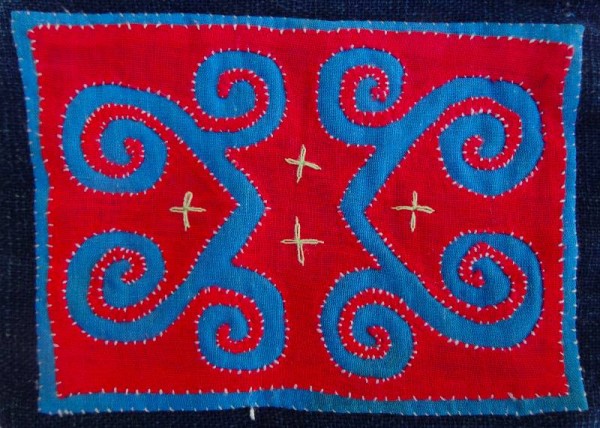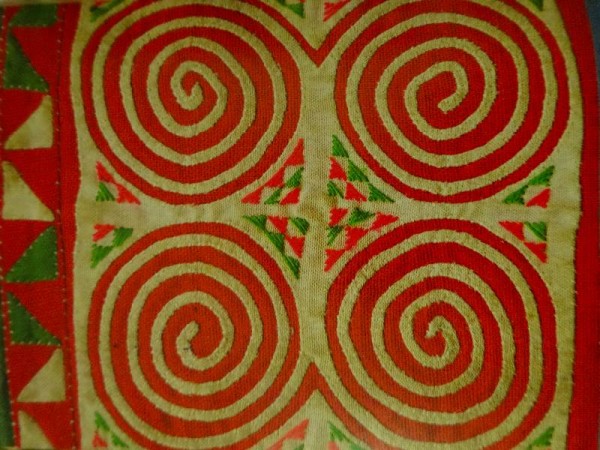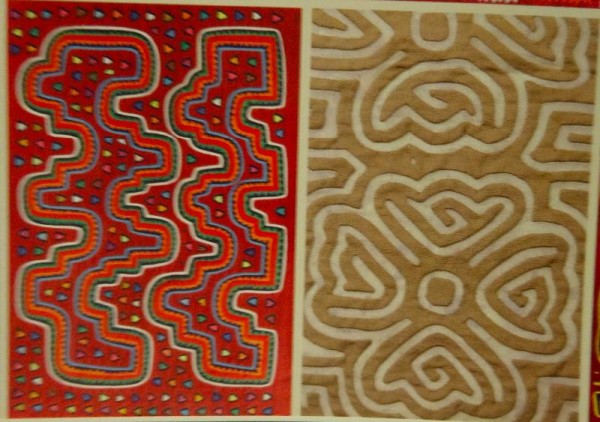I mentioned reverse appliqué decoration in my posts on Vietnamese skirts and afterwards I remembered that when daughter No 2 spent her gap year inVietnam 15 years ago she had brought back several simple little zipped purses decorated in this way. I had an idea where one of these purses was and once I’d picked off the dead moth cases I was relieved to find the decoration hadn’t been damaged. Somewhere we have more purses – they seemed too delicate to use for destructive contents like dirty heavy loose change – I dare say they’ll turn up some time – when they do I think I’ll frame them. Today it’s not so easy to find ones like this with cotton appliqué on a hemp substrate. And for all its lack of careful conservation and moth infestation, the sewing on this purse is perfect with not a whisker of escaped frayed thread.
Curiously, there are two tribes that excel at this style of embroidery and have made it their own. Even more curious is the fact that they are half a world apart. The Kuna women on the Atlantic coast of Panama use this technique to decorate blouses, called molas. The Hmong peoples from mountainous Thailand, Cambodia and Vietnam also use it on clothing as well as on bed covers, tablecloths, cushions, etc. They call it ‘pa nadu’ which means ‘flower cloths’. There is an unwritten tradition (possibly apocryphal) that Hmong reverse appliqué conceals the script of their lost ancient language, transcribed into textile form when their culture was under threat. Sadly, lost too is the ability to interpret these symbols which include steps, spirals, labyrinths and chequerboards.
The technique (in words) is simple and involves 2 (or more) pieces of fabric placed one on top of the other and tacked together. A design is then cut out of the top layer to reveal the fabric beneath. The raw edges of the top fabric are then tucked under and slip stitched to the bottom fabric – a deceptive description for a technique that requires skill or much practice to produce a clean neat edge devoid of straggly fraying threads. When I’ve tried to do something similar I’ve found it fraught with tension as I usually lost the battle to keep the curve smooth and strong and the raw edge tucked firmly under. The thought of using such decoration on anything in regular use has me speechless. From the photographs the stylistic differences of the Hmong and Kuna embroidery is clear.




One Trackback
[…] but suddenly it came to me not so different. The Vietnamese reverse appliqué I first blogged about here falls in with one of my own favourite design themes – maze-like lines where, so to speak, […]